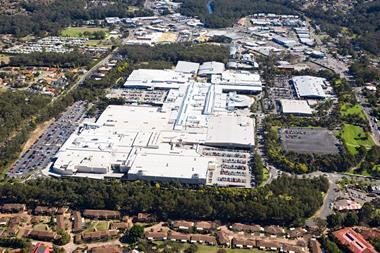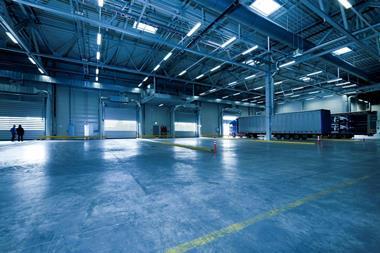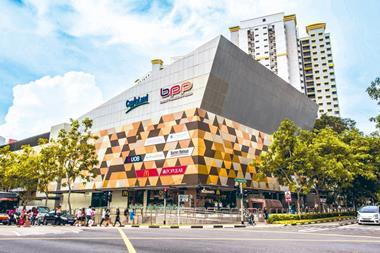The boom in REITs and the surge in foreign investment have boosted liquidity and transparency but good quality investments are still hard to find. Richard Newell explains
With Asia still firmly on the growth curve, particularly in the financial sector, demand for office space in prime business districts of the region is comfortably exceeding supply. This is extending out into decentralised locations and is also benefiting second and third tier cities, as we have seen in China particularly.
Overall, the demand for offices remains buoyant thanks to the steady external environment, less volatile oil prices and stable interest rates. The strength of prevailing demand can be illustrated by the strong pre-commitment rates for new developments. For example, Plaza 66 Tower II and Hongyi Tower, the two buildings newly completed in Shanghai during the first quarter of 2007, are over 80% occupied, with both buildings having pre-committed by tenants well before their physical completion. The same phenomenon is being repeated in Singapore, where Standard Chartered Bank has pre-leased 500,000 ft2 of the Marina Bay Financial Centre development.
With the economy expanding quickly, demand for quality office space in China's main cities remains strong, although significant regional variations persist. Investors should also be aware that due to the extent of construction activity and the cyclicality of office markets, vacancy rates and rental growth have tended to be fairly volatile in recent years. During the last two years, this has smoothed out to some extent as the amount of construction in the cities has moved much closer to the national average as a percentage of the total stock (around 7% compared with 15% in 2005).
Vincent Lo, chairman of Shui On Land, explains that much of the new office building in China is a reflection of more attention being given to the design of built environments that are supportive of creative activity. "The rapid rise of a middle class in China creates a market for high quality developments that offer a wide range of services, adopt leading edge design and embody local culture. Traditional urban form that is based on a single central business district (CBD) is no longer the norm"..
Lo suggests the downtown areas of many mega-cities should be retro-fitted, complementing the specialised urban centre developments on the edge, effectively satellite towns.
According to RREEF's Hong Kong-based analyst, Tan Yen Keng, there are some additional factors that will influence the performance of office markets. "First the relatively poor quality of much of the existing office space, despite the high levels of construction. Much of the existing inventory is of poor quality or functionally obsolete. This has been demonstrated by the flight to quality in tier-1 cities. As a result the best buildings will see strong demand and be able to maintain high rents even when the market as a whole is experiencing considerable oversupply."
The liberalisation of the local banking and insurance markets will underpin strong demand in Beijing's office market, but with marked variations across the city. A surge of new supply this year is concentrated in the CBD, where vacancies are set to rise, in contrast with other sub-markets, such as Lufthansa and Financial Street.
In Shanghai, Tan says prospects are good because of the resilience of demand and, with limited new supply in Puxi and Pudong, declining vacancy rates. New supply is expected to come to the market in 2008 and 2009, mostly in the Pudong area.
In south China, Guangzhou's prime office market has benefited from a relative shortage of supply and, on the back of a strong regional economy, has boosted rents. With the development of a new CBD in Pearl River New City, the new office space coming on stream between now and 2009 is expected to increase total 1.5m m2, according to Jones Lang LaSalle. Shenzhen is also expanding, with 900,000m2 of office space scheduled for completion this year. RREEF comments that many of the new developments are of higher quality and have been pre-sold or pre-let to occupiers. Shenzhen's growth is driven by the continued influx of foreign enterprises and the closer ties with Hong Kong and Guangzhou. Rents are expected to remain stable as occupiers seek to upgrade their existing accommodation.
In Hong Kong, rental growth is expected to remain steady, with limited supply in Central driving tenants out to the neighbouring boroughs. Premium office rents grew almost 50% in 2006, with net effective rents running at around HK$125/ft2 (€12/ft2). Some tenants in the only new premium office in Central, York House in the Landmark, owned by Hongkong Land, are paying more than HK$150/ft2.
Colliers' Herrick Lee says: "A number of companies in Hong Kong took the opportunity of new supply in decentralised locations to upgrade and consolidate their offices under one roof. For example, Maersk has consolidated its offices on Hong Kong Island and moved across the harbour to occupy over 90,000ft2 space at One Kowloon, the new office building recently completed in Kowloon Bay.
The stock of private offices in Singapore has actually declined since 2004, as older office buildings have been demolished for redevelopment, while new supply has been limited. Raffles Quay is the newest development in Singapore and there will be very limited availability of new space between now and 2010. "We anticipate a shortage of space over the next two years, which will cause rents to rise. Increases of over 30% in the coming years cannot be ruled out."
A further 1.5m ft2 of office space is expected to be withdrawn from stock in Central as properties undergo redevelopment or conversion into residential use in the next few years. Although the proposed Marina Bay Financial Centre can potentially meet the demand, it is being phased in over the next 10-15 years, with the first phase available in 2009 at the earliest. As a result of this squeeze, island-wide occupancy rates have risen from 82% in 2003 to 89.5% in the third quarter of 2006. For Grade A office, occupancy is 99.3%.
HSBC expects 2007-08 to be especially tight, with annual supply of just 500,000 ft2 against an historical average annual take-up of 1.57m ft2. Beyond 2010, HSBC analyst Tricia Song expects the phase 2 and phase 3 of the MBFC to come through, "although that is likely to be under 800,000ft2. To ease the obvious shortage, the government has announced new land sales. We expect this new supply to temper long-term rental expectations, although any new supply will still only come through after 2010. Even then, we believe the supply does not look excessive compared to the average annual take up, which means the supply-demand imbalance will persist in the short term."
According to Colliers, average monthly rent of grade A office space was S$8.61/ft2 (€4.18/ft2) at the end of 2006, up 66.5% year on year. With dramatic rental growth of 24% in Q1 this year and testing the 1996 highs of S$9.90/ft2, Song comments: "This raises the question of whether Singapore can remain competitive for businesses. We believe it can as rents are still lower than global and regional peers."
In Asia, Singapore's office rents are still cheaper than in Tokyo, Hong Kong, Mumbai, New Delhi and Seoul. A corporate looking to rent prime office space will need to budget more than twice Singapore rents in Tokyo or Hong Kong.
En-bloc transactions have gathered pace, but Sing says: "We are still seeing predominantly older and non-grade A buildings. The proliferation of REITs, as well as increased interest from foreign developers or funds from Indonesia, Hong Kong, Australia, Europe and the US, has added to competition for office assets."
SEB Asset Management, the German real estate fund management company, is increasing its footprint in Asia, and following investments in China and Japan has acquired a class A office building in Singapore's CBD for €275m. The 35-storey ‘Robinson 77' building in Singapore has tenants including Rabobank, Michelin Asia Pacific, Royal Sun & Alliance, and Singapore Airlines Ltd leasing a combined 40% of the building. The class A office building has 27,450 m2 of rental space and is almost fully let.
SEB's real estate strategists see a variety of reasons to accelerate their activities in Asia. Choy-Soon Chua, managing director and Asian investment expert for SEB Immobilien-Investment GmbH, explains: "The growing significance of REITs and the heightened presence of foreign investors have led to significant improvements in terms of liquidity and transparency. However, high-quality properties are scarce. This generally makes it impossible to enter a market without the assistance of regional partners who can bridge cultural differences and break through language barriers."
With its acquisition of the office building in Singapore, the fund is currently invested in 13 countries. "The real estate cycles in Asian cities are not correlated with those in Europe or the US," says Chua.
The demand for office space in Tokyo CBD remains strong for both newly constructed and existing buildings. The average rent in the Tokyo CBD has exceeded ¥20,000 per tsubo (36 per m2) level for the first time in five years. The vacancy rate stands at 2.72%. In addition, rents for upcoming S grade buildings (predominantly office areas in grade A districts) have recorded very high, which known to be at the level of ¥80,000 (per tsubo). These S grade buildings include, Shin Marunouchi and Sapia Tower in the Marunouchi district.
Mumbai's office market is being driven by financial services, pharmaceutical and telecom companies, together with the IT sector. DTZ reports that rentals have been growing steadily across most micro-markets in Mumbai.
Recently, Citibank took space in Nariman Point at INR 550/ft2 pm. However, rentals in Off-CBD (Worli, Lower Parel) have stabilised, compared with the Bandra-Kurla Complex, where rentals are increasing by around 15% quarter on quarter. Vacancy levels remain at 2-3% across most Indian micro markets. This can be attributed to the increased demand levels and limited availability of grade A developments in the city.
Prominent developments like Oberoi Commerce (550,000ft2), Titanium 1 (200,000ft2) and Kensington (960,000ft2) are coming onto the market now. ¬Indiabulls is coming up with a significant supply of 1.7m ft2 at Jupiter mills, which will be ready for fit-out by the end of the year. Some flattening of rental growth can be expected at that point.
Tight supply is also a feature of the office markets in Korea and Taiwan. Demand in the Xinyi and Dunnan districts of Taipei stems mainly from multinational companies requiring better office space, especially in the landmark Taipei 101 Tower. With no new supply coming through until the completion of theWalsin Lihwa Xinyi Building, expected at the end of 2008, - and that space already partly taken by Citibank - vacancy rates will continue to trend down and rents will move upward.
On the investment front, well-located grade A office is the most converted investment property in the market. Grade B office is also very likely to raise investors' interests, with the availability of prime en-bloc properties dwindling.
The overall supply of leasehold property remains tight across the three main business districts of Seoul. The major new development scheduled for completion this year is the Samsung Seocho Tower in KBD. Two other major mixed developments in YBD are Parc 1 and the AIG IFC project, both expected to come on-line by 2010.
Amid the current economic recovery in Malaysia, demand for quality office space in Kuala Lumpur has been growing. Demand has spilled over to fringe locations in Kuala Lumpur, and new developments situated in fringe areas - but in close proximity to the Light Rail Transit - have become the key targets.
Similarly strong demand is now being seen in Jakarta. Due to the strong pre-commitments for the bulk of new developments coming on line during 2007 and 2008, office rentals are predicted to edge up 5% over the next 12 months.
In Manila, Ayala Land has signed a joint venture agreement with Goldman Sachs and Capmark to develop the 47,000m2 Dela Rosa E-Services Building in the Makati CBD. And despite the prevailing uncertainty on the political front, the demand for offices in Bangkok remains strong.












